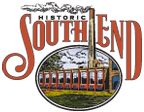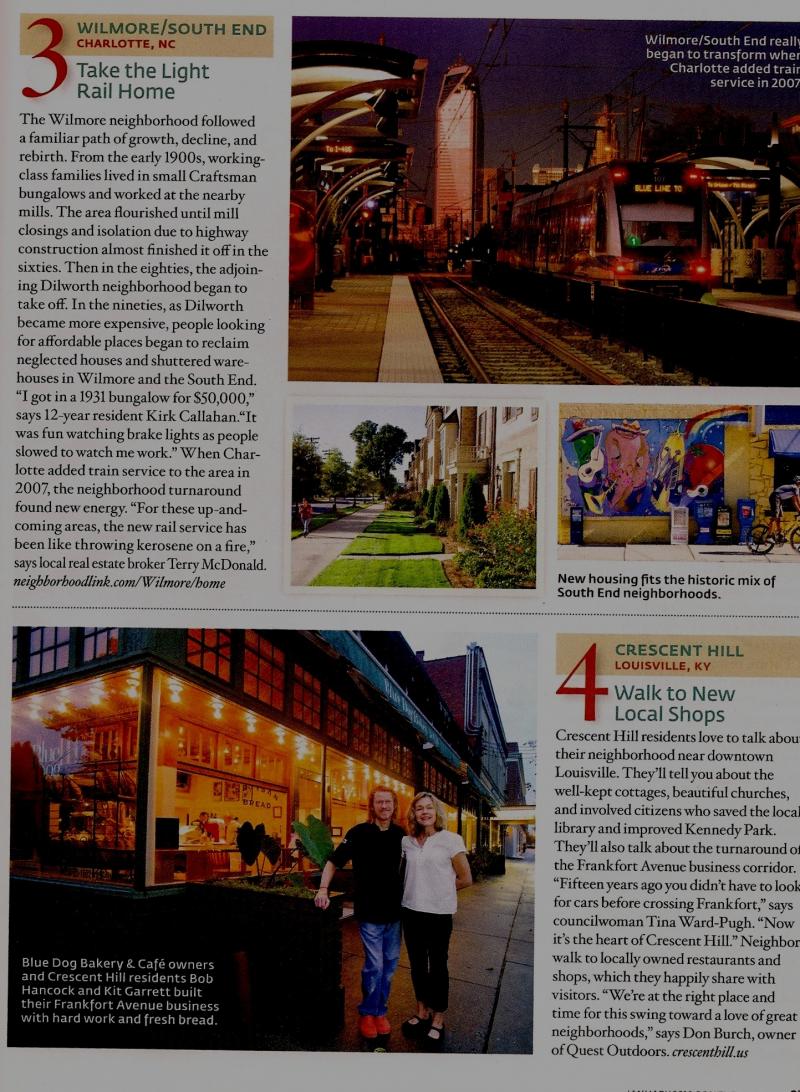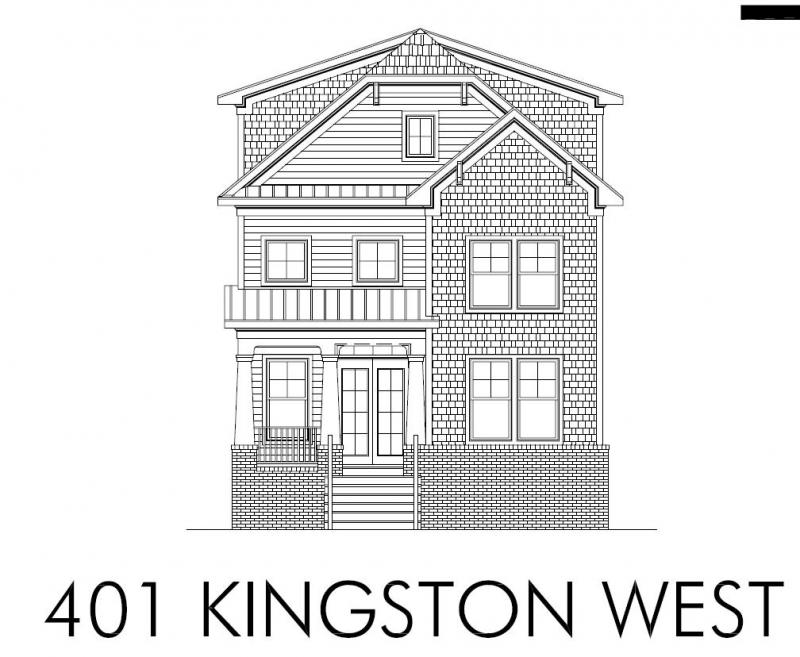Scott Lindsley, Realtor
704 E. 36th Street
Charlotte, NC 28205
ph: (704) 906-1645
fax: (877) 470-0187
scott
- Home
- About Me
- Services
- Contact
- FREE MARKET ANALYSIS OF YOUR HOME
- Your Foreclosure Team
- Charlotte Region Foreclosures - Information, listings, stats, tips for buying
- News & Articles
- WILMORE / SOUTHEND
- SOUTHEND PHOTO TOUR
- Fourth Ward Photo Tour
- NoDa Photo Tour / The Arts District
- Sold!
- FORECLOSURES we've SOLD!
WILMORE / SOUTHEND
Also see my website dedicated solely to living / playing / working in this great neighborhood:
**check out the "southend photo tour" page to see snapshots of this fantastic district -- homes, businesses, neighbors & friends**
The December 2009 issue of Southern Living Magazine lists the 10 best "comeback" neighborhoods in the South and Wilmore / South End is one of them! http://www.southernliving.com/home-garden/best-neighborhoods-00400000061751/page7.html
I've been a resident of the Southend area (in both the Dilworth and Wilmore neighborhoods) since 1998. Having lived in other parts of town my whole life I definitely feel at home in this area. I love the urban vibe and the easy accessability to everything I need and enjoy. Whether it's walking uptown to Panthers Stadium for a game, dining in one of our many restaurants and cafes, or hitting the gallery crawl on Camden on First Friday's there is always something to do in this great district of Uptown Charlotte.
There is also plenty of "new" coming! New restaurants and galleries seem to be opening weekly. Lark & Key Gallery gallery just opened their 2nd location in South End in addition to their NoDa spot and Liberty cafe (finally, a diner!!) is opening on South Boulevard in the old McIntosh's space. For more info on the emerging entertainment scene in Southend check out the info below.
Overall Southend and the adjacent Wilmore neighborhood offer a complete urban experience in Charlotte, and other than NoDa, Elizabeth, and Dilworth few neighborhoods can boast the same. Toss in the light-rail and ability to walk uptown and you have a complete package.
Skip to the bottom of this page for an article I recently wrote for The Mecklenburg Times (10/30/2009) about living in South End.
Wilmore Neighborhood
In the early 1900's developers began pushing outside the traditional boundaries of Charlotte to create new "suburban" neighborhoods. These homes in the country are how our in-town urban bungalow neighborhoods. Wilmore was created by combining two farms, the Wilson and Moore farms (hence Wil More). The land was platted, streets were laid out, and lots were sold off. Wilmore housed workers for the uptown businesses as well as the industry and factories along South Boulevard. The neighborhood was serviced by the Trolley system that criss-crossed the city.
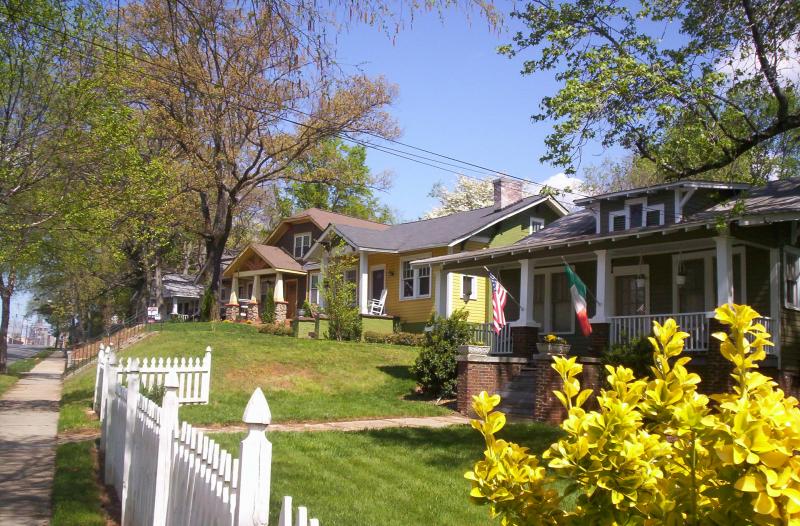
Wilmore is now one of just a few neighborhoods serviced by our only light-rail line which runs north / south from Uptown to Pineville. On weekends and suring special events restored historic trolleys also use these lines and run from Southend to Uptown.
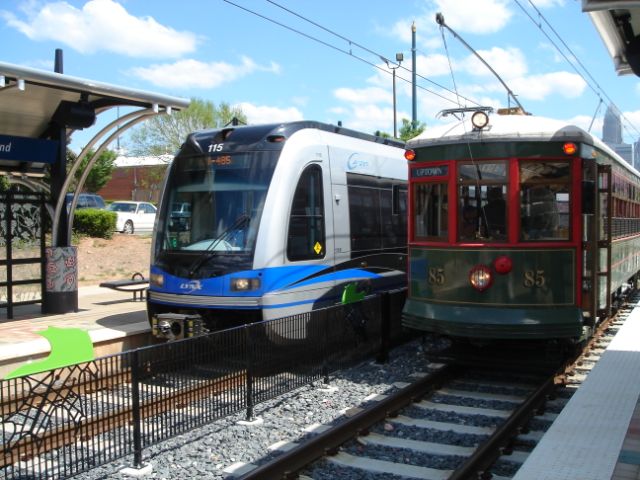
Southend District
In the late 1800's and early 1900's Charlotte became a major crossroads of commerce. Early train lines through the city, and the central location between the big cities of the north and the big cities of the south made this area a natural trade route. The pool of inexpensive labor, the nearby cotton and tobacco farms, and other reasons also contributed greatly to this growth.
What is now Southend was at that time an emerging industrial district with factories and mills lining South Boulevard and the surrounding blocks. For decades this area produced fabrics, textiles, and other goods sold around the country and around the world. As manufacturing began to leave the area many of the factories were boarded up or coverted into warehouse space. In the mid 90's developers and urban pioneers began take note of these great structures and the change began. New uses for these buildings brought business back to the area -- showroom and retail, offices, restaurants, and condominiums are now found in these buildings. The Design Center and surrounding buildings house more than 200 design, graphics, film and production businesses can be found in the area helping create the creative vibe.
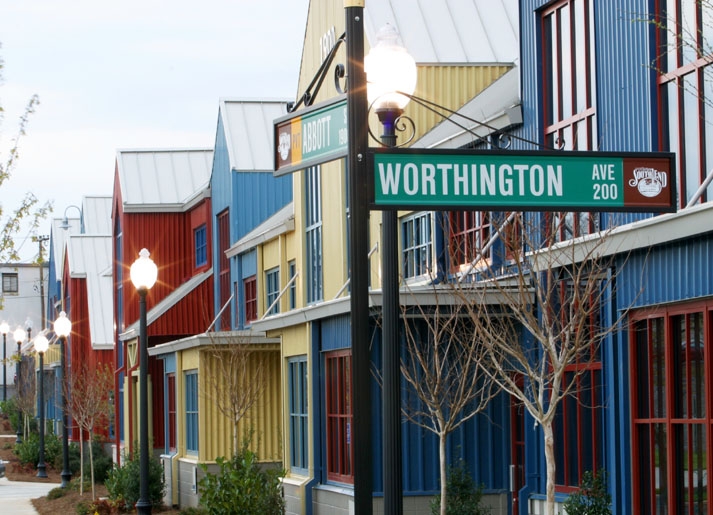
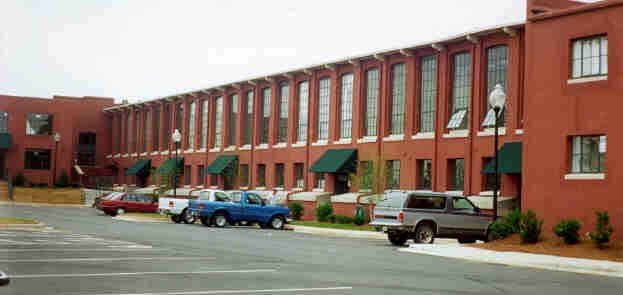
Enter in the light-rail system that opened and began running in 2007. Developers then began eyeing the vacant tracts and parking lots along the line and mixed use condominium projects sprouted up brining in even more residents.
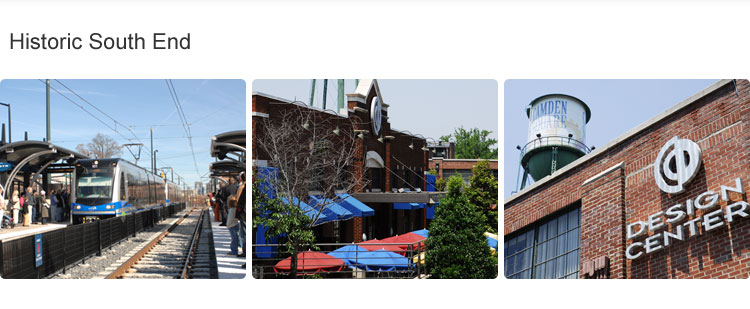
Southend Entertainment District -- Growing by leaps and bounds!
South Boulevard and East Boulevard have always had a great collection of dining, shopping, and nightlife options. The growth of the district and the influx of thousands of new residents from the heavy development and construction in the area have quickly attracted more.
300 East, Pewter Rose, Sullivan's, La Paz, and Nikko Sushi have been restaurant standards for years. Tutto Mundo, Liaison's, Vinnie's Sardine, and The Sunset Club filled in the nightlife and club scene for the area. Further down East Boulevard great selections of international fare have been, and can be found -- Thai Taste, Copper Indian Restaurant, Cantina (Mexican), Kebab Grille (Mediterranian), Zen Asian Fusion, and Sole Spanish Cuisine helped bring about the name "Restaurant Row" for East Boulevard. Amos' Southend (live music venue), Tremont Music Hall, Greek Isles, Jillian's, and Tavern on the Tracks have consistently brought diners and music fans to the area.
Now enter the new additions to this already great mix: Common Market deli / store / cafe / neighborhood hang-out, Dharma Lounge dance club, On The Roxx martini bar, Apostrophie lounge and 1300 Tavern have all either opened in the past year or are about to open.
Article from The Mecklenburg Times
"Southend: Urban Living at its' Neighborly Finest"10/30/2009
On a recent night around 8:30, while watching some inane show that I can’t recall, we decided to head out for a bit. A couple of neighbors had sent messages saying they were out and about and invited us to join. Though I was well aware of how much my neighborhood had changed since I first moved to this part of town more than a decade ago, this particular night was a eye-opener for just how much change had come. We met at Carrabba’s on South for a quick appetizer and a glass of wine. We moved over to Common Market off Camden and hung out in the courtyard with neighbors for an hour or so, then moved across Tryon to see a couple Dj’s that were spinning at Dharma, the new lounge in the district. It was a beautiful night and each place was pretty full – mostly with friends and neighbors that all live in, or adjacent to, the district.
I moved to Dilworth in 1998. At that time I started doing a lot of work in both Dilworth and the nearby district of Southend. Southend was in the early stages of revitalization and not many people had heard or paid much attention to the area. A number of design and creative oriented businesses had located in renovated buildings and spaces. A handful of restaurants were located on the blocks of South Boulevard near East Boulevard and the Atherton Mill complex had been converted into shops and live/work condominiums. The light-rail system was a plan far enough in the future that it hadn’t had much of an impact outside the offices of the planning department or in those of a few visionary developers. All in all the South Boulevard corridor and surrounding blocks was still much of what it had been for a few decades: a semi-industrial area with boarded up buildings used more for warehousing than production. An area with a high crime rate and a place you generally wouldn’t want to be after dark. Inside the uptown loop wasn’t much better and was still primarily a bustling daytime office park with not much else.
The branding of the area as “Southend”, the creation of a special tax-district to bring in revenue to help woo business and development, and finally the pending rail system getting nearer to reality, brought about big change. Back in 1998 and the early 2000’s you could find some activity and nightlife in the area but not a lot. Tutto Mundo and Pewter Rose have occupied their spaces on South since that time and Sullivan’s has been serving up high-end steaks and heavy cocktails as well. La Paz Mexican’s outdoor patio has been a long favorite and Vinnie’s Southside Sardine has been cramming folks in for years.
What we didn’t have a lot of at that time were residents. We had Dilworth to the east and Wilmore to the west, with bungalow lined streets and a scattering of small multifamily properties, but directly inside Southend there were few places to live. Small projects were beginning to take shape and break ground in the area. Tentative steps were being taken by developer pioneers who took the risk that people would be willing to live near the South Boulevard corridor – an area considered less than desirable at the time. Factory South, a former Lance cracker mill, was a pretty bold move in a city more oriented towards outward development than inward. People living in a factory? That wasn’t Charlotte at the time. That was how friends lived who moved away to Atlanta, DC, or New York , but not Charlotte. Park Avenue Condominiums, on Park Avenue between South and Camden were completed and the adjoining office building was finished. The small mixed use building The Kingston was built on Camden as were the row of storefront business condos further down at the corner of West Boulevard. Atherton Heights, Latta Heights, and Village of Southend were all erected on the Dilworth side and the construction of housing options seemed to gain momentum and were becoming the norm.
The Arlington, now widely known as The Pink Building, boldly showed up on the skyline, quite a different hue from the blue/green renderings that were originally part of the plan. This seemed to be a brash flashing light drawing eyes to Southend and effectively announcing that things had begun to change in earnest. Light rail was no longer a distant dream and as its’ completion got nearer and nearer developers and investors began pouring into the area. Land was snapped up, prices began to rise, and new projects were announced every other month. What did seem to be lacking was a significant new number of businesses, shops, and dining options to satisfy the impending wave of new residents, but building and selling condos was the call of the day and the system was working overtime to build them. By the time the light-rail blue line opened and began moving us north and south from Uptown to Pineville and right through Southend it was no longer unusual to hear someone say they lived in Southend or Wilmore.
For the next year or two those that lived in the area still ventured elsewhere for much of their entertainment and dining. The restaurant row of East Boulevard, the new digs in uptown, and the few spots along South Boulevard filled the need. But the area today is much different than it was just those few years ago. The economy and housing slump has slowed and stopped most new condo developments, but in their place 5 new apartment projects have either just been finished or are about to be, bringing in over 2000 new folks to a 5 or 6 block area. Camden Road now boasts numerous shops, cafes, galleries, and small businesses. An entertainment district that rivals any other part of town including uptown can now be found along a 2 – 3 block stretch of Tryon Street including large live music venues, a couple martini bars, 3 sports bars, a nightclub, and dining options from Greek to Sushi to burritos.
For those of us that live in the neighborhood it finally feels “urban” and nearly complete. On any given weekend we don’t have to leave the area at all and can walk or bike to everything we need. We can switch gears from a night at home to an evening out with friends by simply putting on a coat and stepping out the door. Just a short 2 block walk away and we are in the midst of a thriving and lively collection of restaurants and bars. If this was the vision that those who saw the potential in the area and worked to create what we now know as Southend I say “great job”. Myself and my neighbors really appreciate what you’ve done. All this in the midst of arguably the worst economic climate in decades makes me wonder just what we’ll see when things are actually good – because right now, in this area, for this resident, things seem just fine.
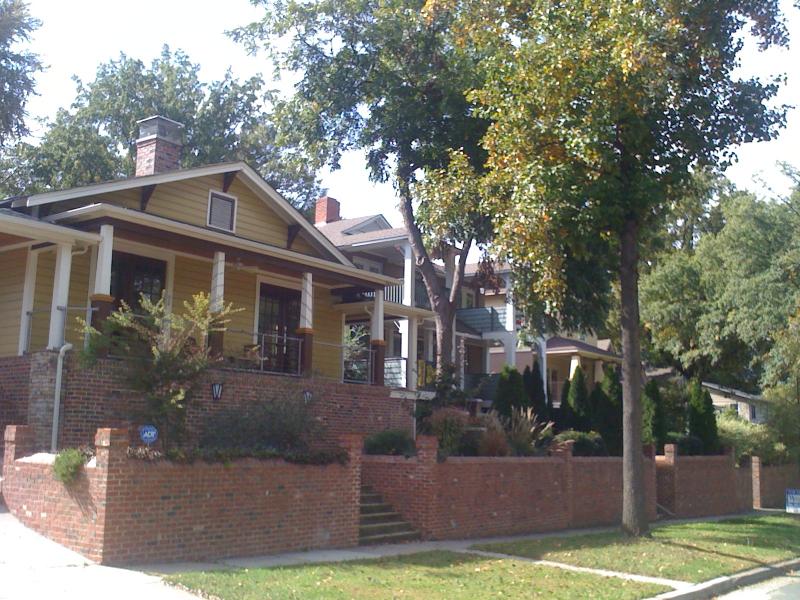
Copyright 2009 Scott Lindsley. All rights reserved.
Uptown Charlotte condos homes bungalows Web Hosting by Turbify
Scott Lindsley, Realtor
704 E. 36th Street
Charlotte, NC 28205
ph: (704) 906-1645
fax: (877) 470-0187
scott

